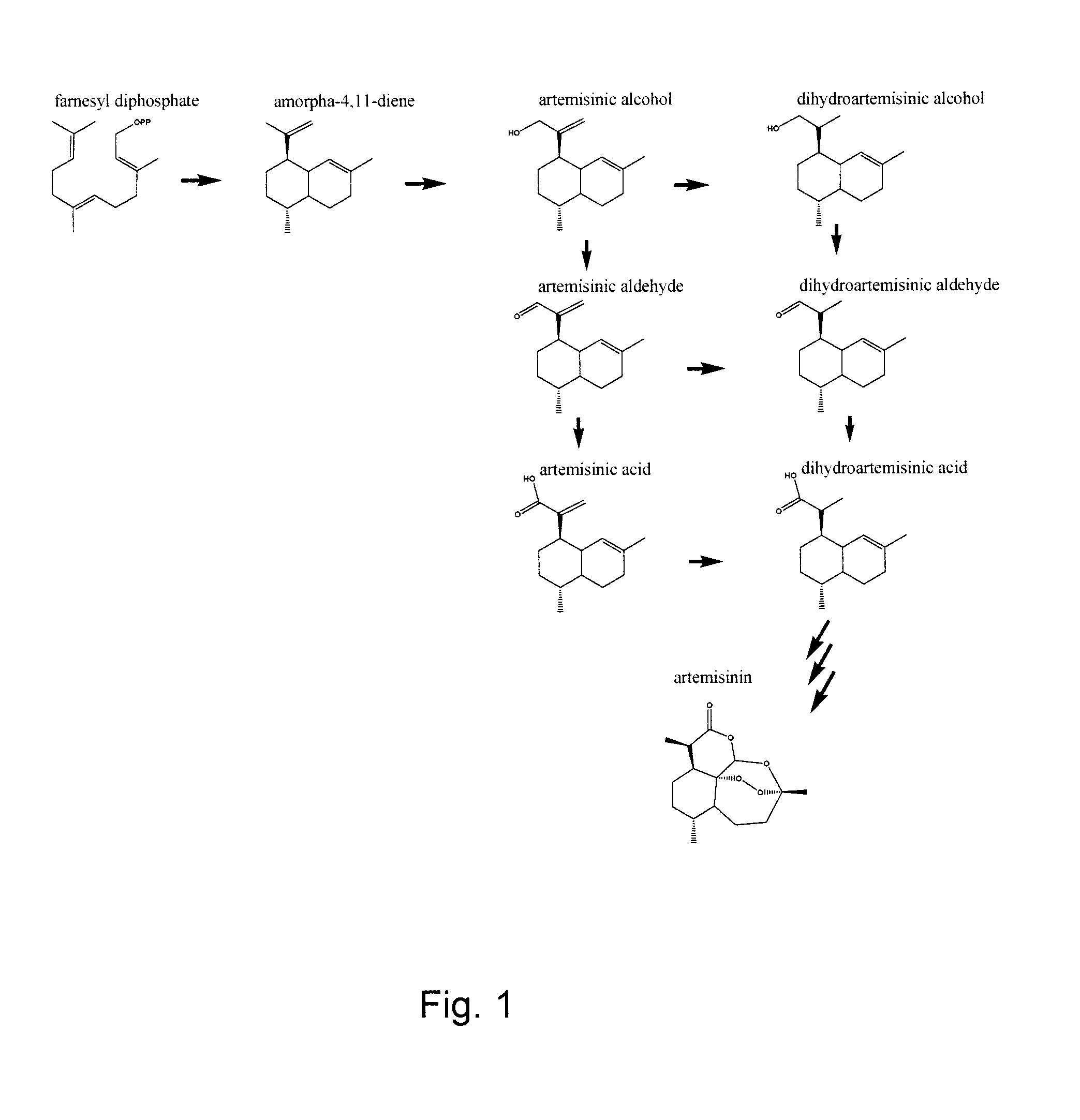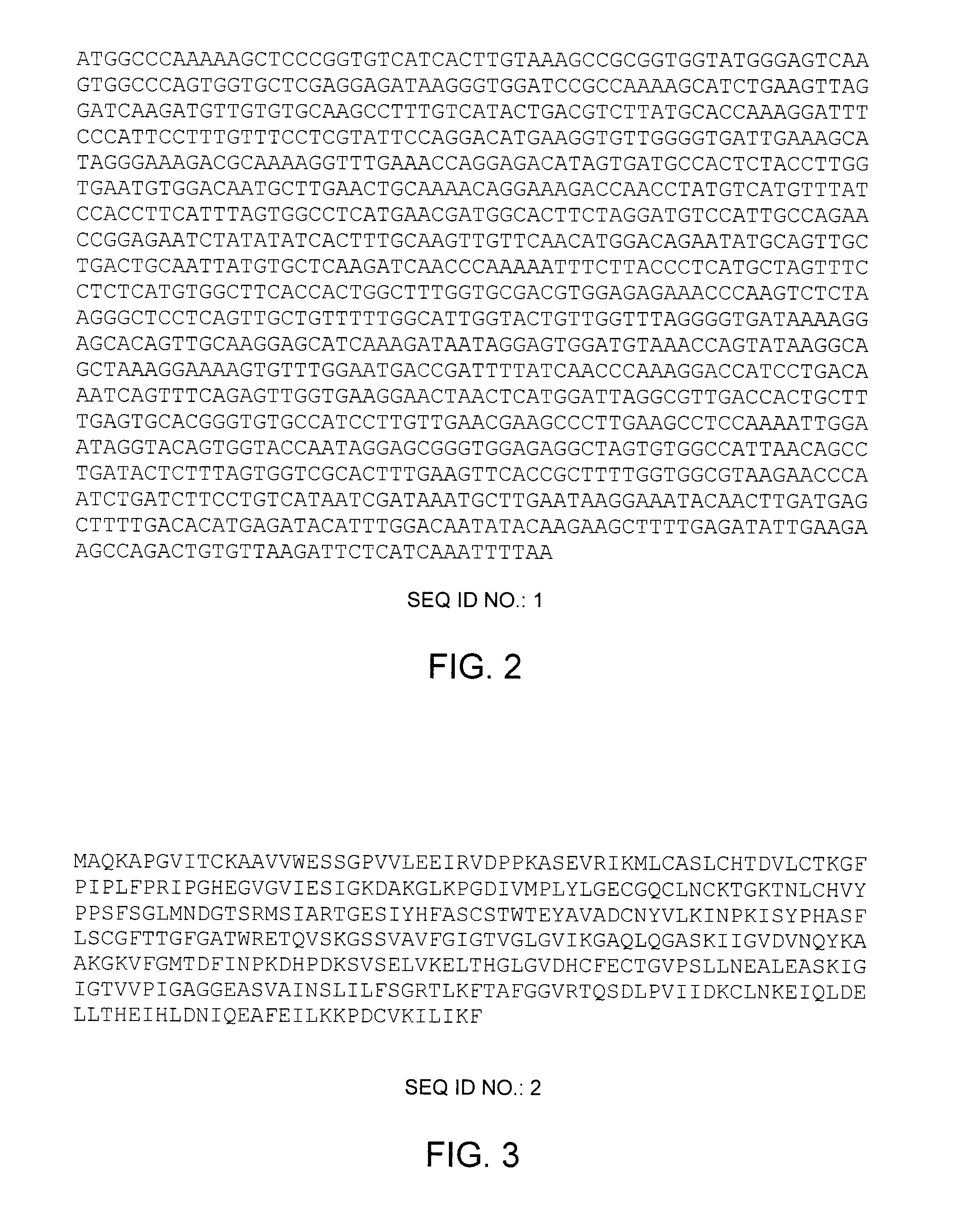Nucleotide sequence encoding an alcohol dehydrogenase from artemisia annua and uses thereof
a technology of alcohol dehydrogenase and nucleotide sequence, which is applied in the field of plant-derived compounds, can solve the problems of limited or variable supply of relevant plant material for these drugs, affecting the production of plant-derived compounds, and affecting the quality of the produ
- Summary
- Abstract
- Description
- Claims
- Application Information
AI Technical Summary
Benefits of technology
Problems solved by technology
Method used
Image
Examples
Embodiment Construction
Materials and Methods:
Artemisinic Aldehyde
[0039]Artemisinic acid was isolated from dichloromethane extracts of A. annua flower buds and leaves (Teoh, Polichuk, Reed, Nowak, & Covello 2006) and was used to synthesize artemisinic aldehyde according to the method described by Chang et al. 2000, the disclosure of which is incorporated herein by reference.
Dihydroartemisinic Aldehyde
[0040]Dihydroartemisinic aldehyde was synthesized from the isolated dihydroartemisinic acid (see above). The acid was converted to methyl dihydroartemisinate with excess diazomethane in diethyl ether at 0° C. for 5 minutes. The ether and diazomethane were removed under a stream of nitrogen and the methyl ester was reduced to (11R)-dihydroartemisinic alcohol with excess 1.5 M diisobutyl aluminum hydride in toluene at room temperature for 10 min under nitrogen. With subsequent extraction, oxidation to the aldehyde with pyridinium chlorochromate (Corey & Suggs 1975) and purification by HPLC the (11R)-dihydroartem...
PUM
| Property | Measurement | Unit |
|---|---|---|
| height | aaaaa | aaaaa |
| optical density | aaaaa | aaaaa |
| pH | aaaaa | aaaaa |
Abstract
Description
Claims
Application Information
 Login to View More
Login to View More - R&D
- Intellectual Property
- Life Sciences
- Materials
- Tech Scout
- Unparalleled Data Quality
- Higher Quality Content
- 60% Fewer Hallucinations
Browse by: Latest US Patents, China's latest patents, Technical Efficacy Thesaurus, Application Domain, Technology Topic, Popular Technical Reports.
© 2025 PatSnap. All rights reserved.Legal|Privacy policy|Modern Slavery Act Transparency Statement|Sitemap|About US| Contact US: help@patsnap.com



